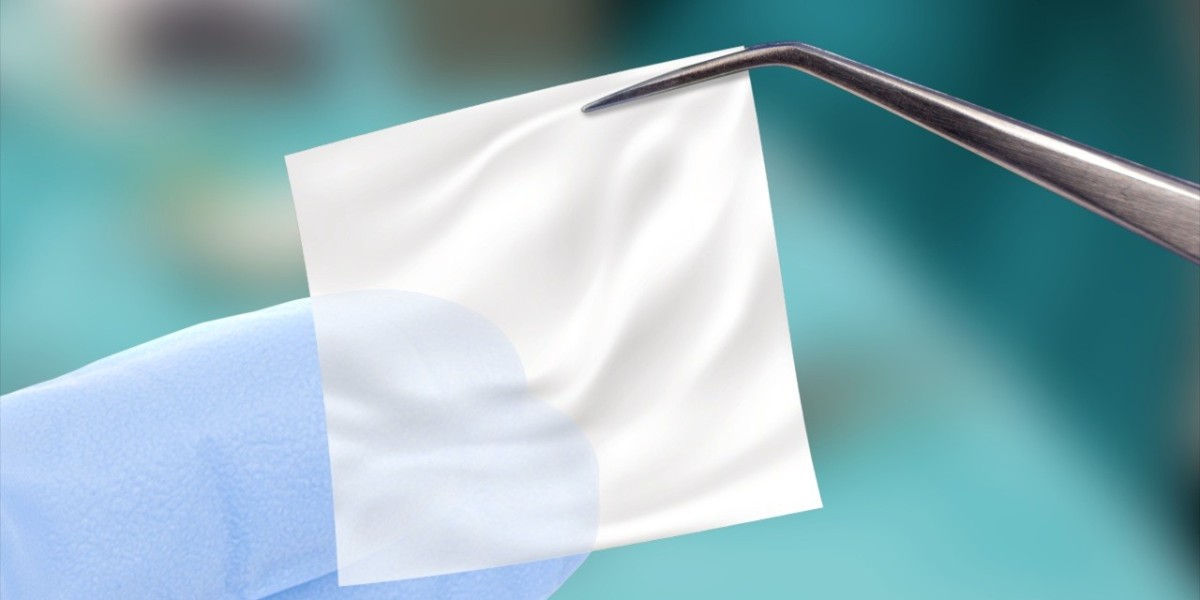Chronic wounds are a significant challenge in modern healthcare, affecting millions of individuals worldwide. These wounds often result from conditions such as diabetes, venous insufficiency, or traumatic injuries, and they can persist for months or even years. Traditional wound healing methods sometimes fail to offer the desired outcomes, leaving patients with slow recovery times, chronic pain, and an increased risk of infection. However, the emergence of amniotic skin grafts is transforming the landscape of chronic wound management.
Amniotic skin grafts are derived from amniotic membrane tissue, which is rich in growth factors and has a remarkable ability to promote tissue regeneration and healing. This revolutionary treatment is rapidly gaining recognition for its potential to speed up recovery, improve wound healing, and enhance overall patient outcomes. In this article, we will explore how amniotic skin grafts are reshaping chronic wound care and the reasons they are becoming a go-to solution for medical professionals worldwide.
What Are Amniotic Skin Grafts?
An amniotic skin graft is a biological dressing made from the amniotic membrane, the innermost layer of the placenta. This membrane is often used in regenerative medicine for its exceptional healing properties. When applied to chronic wounds, amniotic skin grafts serve as a biological bandage that not only covers the wound but also encourages tissue regeneration, reduces inflammation, and minimizes scarring.
Amniotic membrane allografts (tissue from a donor) are processed and sterilized before being applied to wounds. They contain key growth factors, cytokines, and proteins that help stimulate the body’s natural healing processes. These grafts offer significant advantages over traditional wound care techniques by providing an environment conducive to faster healing and better tissue restoration.
Key Benefits of Amniotic Skin Grafts in Chronic Wound Management
1. Accelerated Healing Process
One of the primary reasons amniotic skin grafts are so transformative is their ability to accelerate the healing process. Chronic wounds often struggle to close or heal due to underlying conditions such as poor blood circulation or compromised immune function. Amniotic membrane grafts help overcome these barriers by providing essential growth factors that promote cellular growth and repair. These growth factors stimulate the formation of new tissue, leading to faster closure of the wound and a reduction in the overall healing time.
2. Reduction in Inflammation and Infection Risk
Amniotic skin grafts also contain natural anti-inflammatory properties, which help reduce swelling and irritation in the affected area. Chronic wounds are often plagued by persistent inflammation, which can delay healing and cause further damage to the tissue. The application of an amniotic skin graft can calm this inflammation, providing relief to the patient and promoting a more favorable healing environment.
Moreover, the graft’s natural antimicrobial properties help reduce the risk of infection. Chronic wounds are highly susceptible to bacterial invasion, which can complicate recovery. The amniotic tissue creates a barrier against harmful microorganisms, reducing the likelihood of infection and encouraging the body’s defense mechanisms to work more effectively.
3. Enhanced Tissue Regeneration and Scar Minimization
Scar formation is a common concern for patients with chronic wounds, especially when the healing process is prolonged. Scar tissue can limit mobility and affect the aesthetic appearance of the skin. One of the standout features of amniotic skin grafts is their ability to support tissue regeneration with minimal scarring.
The growth factors present in amniotic skin grafts stimulate the regeneration of healthy skin cells, which not only helps close the wound but also improves the overall quality of the healed tissue. This regenerative effect results in reduced scarring compared to traditional wound care treatments, leading to smoother, more functional skin after healing.
4. Minimizing Pain and Discomfort
Chronic wounds are often painful and can cause significant discomfort due to irritation, infection, or inadequate healing. Amniotic skin grafts provide a soothing effect on the wound area, promoting pain relief. The graft acts as a protective layer, reducing friction and irritation while the body heals beneath it. This helps alleviate pain and makes the healing process much more comfortable for patients.
5. Support for Complex Wounds
Amniotic skin grafts are particularly beneficial for treating complex and difficult-to-heal wounds. For example, diabetic foot ulcers, venous leg ulcers, pressure sores, and surgical wounds can all benefit from the regenerative properties of amniotic skin grafts. These wounds often fail to heal with traditional treatments, but the application of amniotic grafts provides a unique solution to encourage healing in these challenging cases.
Patients who have previously experienced long-term wound issues or those with compromised healing ability due to medical conditions such as diabetes can find significant benefit from this treatment. By providing the body with the necessary biological components for regeneration, amniotic skin grafts offer hope to individuals suffering from chronic wounds that may otherwise remain open indefinitely.
How Amniotic Skin Grafts Compare to Traditional Treatments
Traditional wound care methods, such as bandages, dressings, or synthetic grafts, are commonly used to manage chronic wounds. However, these treatments often fall short in terms of promoting effective healing or preventing complications. For example, synthetic dressings may not adequately protect against infection, and traditional bandages may require frequent changes, leading to patient discomfort.
In contrast, amniotic skin grafts offer a more advanced, biological approach to wound healing. These grafts not only protect the wound but also stimulate the body’s natural healing process by providing the essential biological components needed for tissue regeneration. This results in faster healing, a reduced risk of infection, less pain, and improved tissue quality, making amniotic skin grafts a far superior option for chronic wound management.
The Future of Amniotic Skin Grafts in Wound Care
As the field of regenerative medicine continues to grow, the use of amniotic skin grafts is expected to expand further. Ongoing research is uncovering new ways to enhance the effectiveness of these grafts, and future advancements may lead to even more efficient wound care solutions. The potential for amniotic skin grafts to treat a wide range of chronic and complex wounds makes them an exciting prospect for patients and healthcare providers alike.
In addition to wound care, amniotic membrane grafts are also being explored in other medical areas, including ophthalmology and orthopedics, further proving the versatility and potential of this remarkable tissue.
Conclusion
Amniotic skin grafts represent a groundbreaking advancement in chronic wound management. With their ability to accelerate healing, reduce inflammation, minimize scarring, and prevent infection, they are quickly becoming the go-to solution for treating difficult-to-heal wounds. Whether used for diabetic ulcers, pressure sores, or traumatic injuries, amniotic skin grafts offer a much-needed alternative to traditional wound care methods.
As more healthcare professionals embrace the benefits of amniotic skin grafts, patients can expect faster recovery times, less pain, and more effective healing. The future of chronic wound treatment is bright, and amniotic skin grafts are leading the charge in transforming how we approach tissue repair and regeneration.









